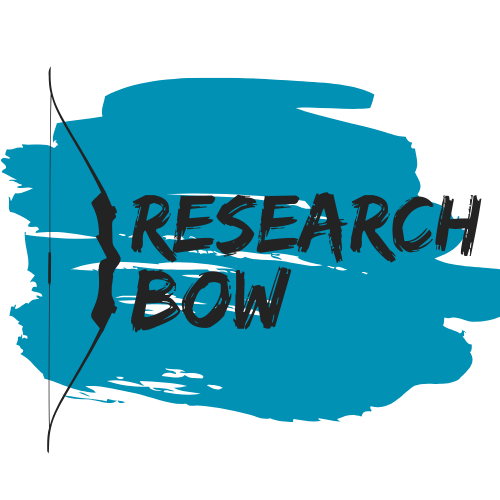We love hearing about other peoples’ research and finding out about new methodologies is always an exciting prospect. It’s time to shine a spotlight on some of the groundbreaking methodologies that we have heard are being used within our own PGR cohort! Join us as we start our new blog series, Tell Us About Your Methodology, with an interview with 3rd year PhD candidate, Emy Nimbley (Clinical Psychology).
What methodology are you using?
I used dyadic, semi-structured interviews.
What are the key aspects of this methodology?
Dyadic interviews involve interviewing two individuals at the same time about their shared experiences. The importance of multi-perspectives are emphasised through dyadic interviews. Due to the discursive nature of the dyadic interview, I would recommend developing a semi-structured format, allowing the participants to address key questions but to expand and exchange their experiences with more freedom.
Why did you choose this methodology?
I chose this methodology because I strongly advocate a multi-perspective approach to research, particularly in the field of autism and eating disorders that I work in. Co-occuring autism and eating disorders happen to the individual, but also within the individuals’ broader social context, meaning that informed and comprehensive understandings must acknowledge all these perspectives. Dyadic interviews provide a novel and under-utilised form of qualitative data collection and allow for simultaneous and interactive data collection of multi-perspectives. I also chose this methodology as I think it aligns very well with my chosen analytical approach of Interpretative Phenomenological Analysis. This approach involves making sense of the participants sense making, and the dyadic process inherently involves this sense making in real-time.
Why would you recommend this methodology?
I would recommend dyadic interviews to anyone conducting research on a topic or experience that would benefit from multi-perspectives. I found that the approach generated fascinating interviews and provided me with rich data that provides insights into not only how each member of the dyad makes sense of their experience individually, but also how they make sense of their experience together.
What additional training / help was needed to use your methodology?
There was minimal training involved in conducting the interviews themselves. Due to the fact my interviews were conducted online, there were several workshops on online interviews that can help you understand the process a little better. Out with that, I drew on multiple, open access resources about best practice in conducting dyadic interviews. I would recommend the following methods chapter discussing ethical issues associated with dyadic interviews (https://methods.sagepub.com/book/the-sage-handbook-of-qualitative-research-ethics-srm/i1027.xml) or the following open access resource blog post (https://www.qualiq.ca/blog/dyadic-interviews).

What are the benefits of this method?
Dyadic interviews allow not only for complementary perspectives of shared experiences, but also for a unique interaction of these perspectives. In these cases, it may be that one member of the dyad will remember something that the other member may have forgotten should they have been interviewed individually. I think an indirect benefit of this method (for my particular study, I emphasise) was that the participants reported that they benefited from the experience, discussing their shared experiences in a platform many of them had not explored before.
What are the challenges of using this methodology?
I would flag up a word of warning that this methodology did meet some resistance within the population I was seeking to recruit, and understandably so. Not everyone is in a position to take part in a dyadic interview, while some individuals would much prefer to take part in research by themselves. I would recommend that you make sure you justify your rationale for using the methodology, acknowledge the possible recruitment limitations / bias that may arise, and communicate this clearly and in a considerate manner to the population you are recruiting. Other things you need to bear in mind are ensuring that there is equal contribution between participants, and that you are prepared for any conflicts that may arise between participants. You can resolve this by careful considerations and planning in the lead up to your interviews, practicing ways of engaging both members of the participants equally, or by practicing techniques of conflict resolution. I would also encourage you to discuss these potential issues with your supervisors before you conduct your interviews, as well as continuously checking in with them throughout the process.
Where can I find more information about this (e.g., key publications)?
Morgan, D. L., Ataie, J., Carder, P., & Hoffman, K. (2013). Introducing dyadic interviews as a method for collecting qualitative data. Qualitative health research, 23(9), 1276–1284. https://doi.org/10.1177/1049732313501889
What errors / limitations did you wish you would have spotted earlier?
Time management was an important feature that I should have considered earlier. My first few interviews came in at an hour and a half, when they were only estimated to take 45 to 60 minutes! This was, I think, due to the fact this was my first experience with the dynamic of a dyadic interview, and in subsequent interviews I learnt to navigate my role as interviewer better, learning when to sit back and allow for interactions but also when to continue steering the interview back towards the research questions.
What advice can you give to other people using this methodology?
Do your research! I would make sure that a dyadic approach aligns with your research question, and that you can provide ample justification of why you have chosen to take this approach (vs. individual interviews). Practice the interview a few times with dyads of peers or colleagues, as the interactive nature is different than interviews with an individual – for example, I think a key feature of the dyadic interview is allowing the participants to discuss and interact amongst themselves, and so it is important to be able to take a step back from the role of interviewer. I have found that using the dyadic interview has provided me with very rich and informed data, providing novel insights into shared experiences, and I would highly recommend anyone who is interested in collecting multi-perspectives to consider adopting this methodology!





